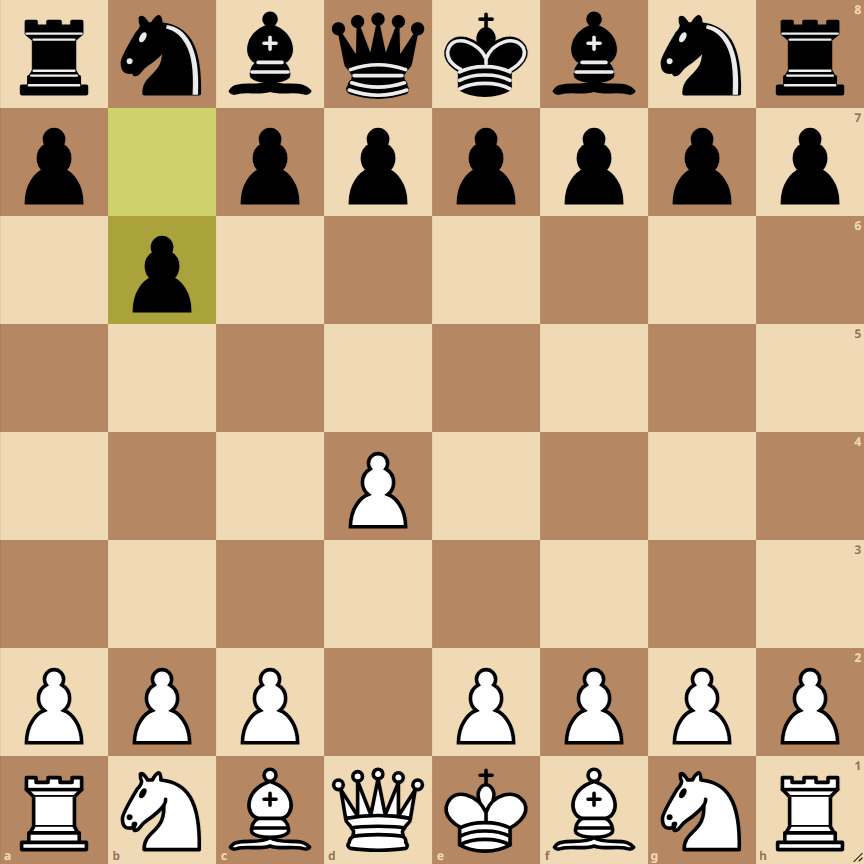How to Play the English Opening

The English Opening is one of the most popular and versatile chess openings. Characterized by the initial move of the white pieces, it aims to control the center of the board from a more flexible and less direct approach compared to openings like the Sicilian Defense or the King’s Pawn. Below, the main move of this opening is detailed:
- 1. c4: White advances their pawn from the ‘c’ file two squares forward. This move aims to control the center, specifically the d5 square, and opens lines for the development of the white-squared bishop and queen. It introduces a positional struggle and sets the stage for a more strategic game.
Variants of the English Opening
The English Opening has several variants, each with its own set of ideas and plans. Here are some of the most important ones:
Symmetrical Variation
In this variation, Black responds symmetrically to 1. c4 with 1…c5. Black aims to equalize the game and maintain balance. The game unfolds with both players vying for control of the center and space on the board.
Agincourt System Variation
After 1. c4, Black plays 1…e6, preparing for a more traditional development and possibly transposing into a Queen’s Pawn Opening. This system allows Black to maintain flexibility in their pawn structure and piece development.
Gran Prix Attack Variation
This variation is characterized by more aggressive play from White. After 1. c4, if Black responds with 1…e5, White can opt for 2. Nc3 followed by f4, aiming for rapid development and an early attack, especially targeting the Black king’s side.
English Opening in Chess
The English Opening, which starts with 1. c4, is a flexible and strategic chess opening, favored for its ability to lead the game into various types of pawn structures and positions. With this first move, White aims to control the center of the board from the flank, possibly preparing an expansion with pawns d4 and e4.
Strategies and Tactics for Both Sides
For White
- Control of the Center: The English Opening does not immediately occupy the center with pawns, but it does control it from a distance. This offers White great flexibility in terms of pawn structure and choice of plans.
- Harmonious Development: It allows for a natural development of pieces, with the knight on g1 typically moving to f3 and the bishop on f1 possibly seeking active positions on g2 (after g3) or e2.
- Positional Play: It often leads to positional games, where White can maneuver patiently and look for the opportune moment for tactical actions or a breakthrough in the center.
For Black
Black has several popular responses, each with its own strategic ideas:
- 1…Nf6: Aiming to control the center and preparing for the advance of the queen’s pawn, either to d5 or d6. Black maintains flexibility, getting ready to respond to White’s setups.
- 1…e5: This is an aggressive and direct response, challenging White’s control of the center. Black seeks space and activity from the start, often leading to open pawn structures and dynamic play.
- 1…e6: Prepares for d5, aiming to challenge White’s control of the center. This move can lead to more closed pawn structures and a strategic game, similar to the French Defense.
Best Follow-up Moves
For 1…Nf6: White can continue with Nc3, preparing for e4, or g3, aiming to fianchetto the bishop. Black can play d5 to directly challenge the center or g6, targeting a bishop fianchetto and a more positional approach.
For 1…e5: White often plays g3 and fianchettoes their bishop on g2, strengthening their control of the center and preparing for a possible d4. Black can develop their knight to f6 or play c6, preparing d5.
For 1…e6: A common approach for White is to play Nf3 and d4, occupying the center. Black, on the other hand, usually plays d5, creating central tension and aiming for a solid and structured game.
In summary, the English Opening is versatile and rich in possibilities, offering both players numerous opportunities for creative and challenging play.
